Terrifying Moment Snowboarder Frantically Swims Through Avalanche to Stop Himself From Being Buried Alive
The scary incident was caught on camera.
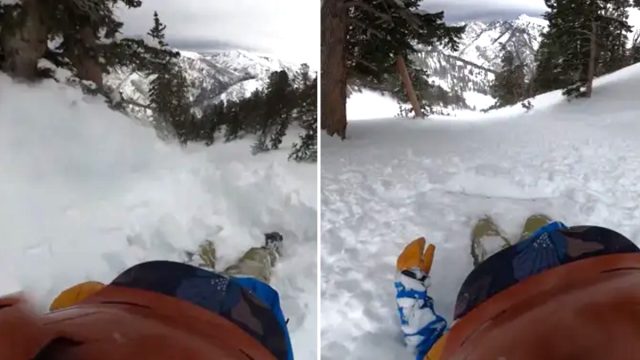
A snowboarder survived a heart-stopping avalanche by coasting on top of the snow, making “swimming” motions to stop from being submerged. Blake Nielson was snowboarding in Big Cottonwood Canyon in Salt Lake, Utah, when what he describes as an “isolated slab” came loose and propelled him down the mountain. Nielson was wearing a helmet camera device that captured every moment as it was happening—here’s what the footage showed.
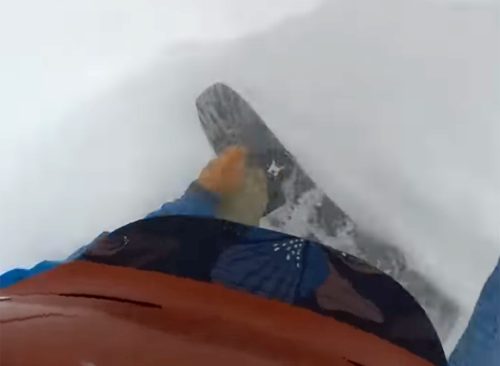
Nielson filled out an incident report after the avalanche to explain what happened and how he got caught up in the near-disaster. Video footage shows him sliding down the mountain, talking to his friend who was also boarding. “Logan, I’m sliding” he shouted over the radio. “I’m staying on top, but I am sliding.”
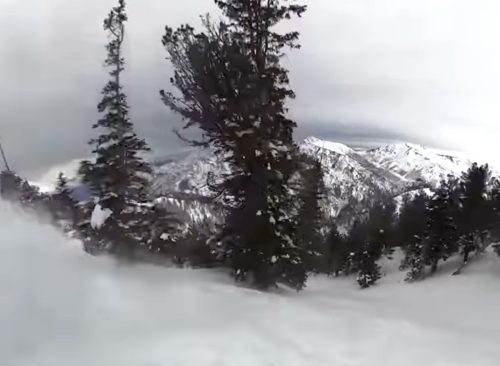
Nielson describes how he was helpless to stop the debris taking him for a ride. “I descended first and dropped into the hanging bowl, after making a heel side turn, an isolated wind slab broke loose below and above me which knocked me off my feet and took me for a ride. I was able to keep the majority of my body above the snow and was able to radio my partner that I was sliding with the debris.”
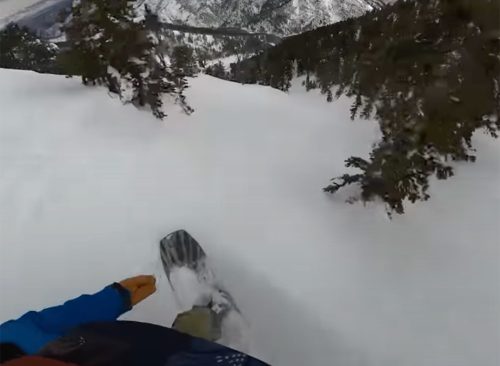
Nielson explains how he was able to prevent himself from being submerged by the snow. “I made swimming motions with my arms and kicked my board to help keep me on top. After about 300 feet, I was able to slow down and stop, while the rest of the debris released below me. After regrouping, we descended the debris. The slope slid about 1,300 feet.”
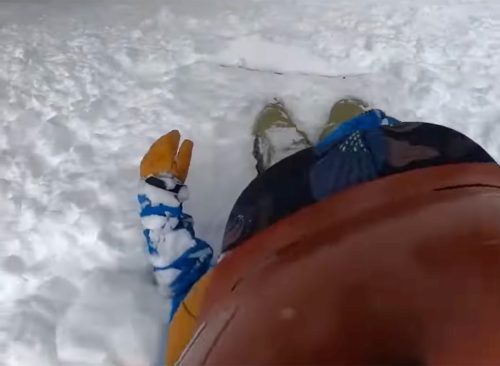
Nielson was unharmed, but understands how lucky he was. He reminds others to take extra precautions when snowboarding in potentially dangerous conditions. “Respect the wind,” he says. “Even a small ‘manageable’ wind pocket can break and carry you a long way in steep terrain with long runouts.”

Nielson says lessons have been learned from the incident. “Cross loading is serious. I had read the avy [avalanche] forecast and knew that wind was a problem, but I did not anticipate cross loading to be as obvious as a problem, as this is less common in the Wasatch. Lesson learned.” According to Avalanche Canada, “Cross-loading is the result of wind transporting snow across a slope. During cross-loading, snow is picked up from the windward side of ribs and outcrops and is deposited in lee pockets. Cross-loading commonly contributes to wind slab formation.”














